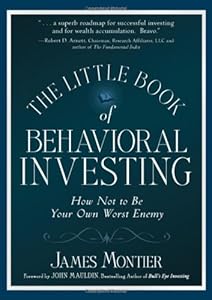Some years back, I was at an office event that coincidentally was being managed by an acquaintance. Everything was going well when suddenly the lights went off. The music stopped. People lined up at the juice stall groaned. The microphones of course became dysfunctional too. A company executive who had just launched into a rendition of “fun at work” came to an abrupt halt. The event management team managed to locate a battery operated microphone in about 5 minutes. Turned out it wasn’t working. Anyhow, the lights came back on in another minute and everyone got back to the fun and games.
Now why am I telling you this story? Here’s why. Except for the electricity glitch, the event was alright. The event manager came to me and I said (more out of politeness), “The event’s been good. We’ve had fun.” Response: “Thank you. Here’s my card … in case you need my services.” “Sure. What happened with the lights though?” “Yeah. Really bad luck. The lights are quite reliable otherwise.” And that’s when I went … Whoa! That’s not bad luck. That’s sheer unpreparedness. No way was I (or the office probably) hiring these guys ever, not with that attitude!
So, coming to the moral of the story: self-attribution bias, as demonstrated by the event manager. It’s one of the behavioral pitfalls Montier discusses in Chapter 12 of the The Little Book of Behavioral Investing: How not to be your worst enemy. The second one is hindsight bias. Both insensate us from (a) recognizing our mistake, (b) accepting our mistake, and (c) remembering the lesson learned.
As expected, most investors are afflicted by both biases. If an investment decision bears rich fruit, they’re ecstatic about their skills. If the decision leads to a loss, it’s blamed on bad luck, an unpredictable market … anything but themselves. Granted, questioning your ability as an investor may prove detrimental to your self-worth but at the very least, investors must unbiassedly dissemble the rationale behind a bad decision to prevent a repeat performance.
That’s not to say that luck doesn’t count in the stock market. It does but many erroneous decisions are a consequence of inadequate research or incorrect analysis.
Montier quotes Jeremy Grantham, chief strategist at GMO, to demonstrate how little history means to the majority of investors. When asked, “Do you think we will learn anything from this turmoil?” he responded, “We will learn an enormous amount in the very short term, quite a bit in the medium term, and absolutely nothing in the long term. That would be the historical precedent.”
As always, our good friend Montier offers a practical solution for investors to curb these behavioral tendencies. George Soros, author of the Alchemy of Finance, proposed this approach: Keep a diary and record your decisions as well as the rationale behind those decisions – in real time. Montier takes it further: Map the outcomes of your decisions and the background reasoning into a quadrant diagram as follows:
| Good outcome | Bad outcome | |
| Right reasoning | Skill (perhaps) | Bad luck |
| Wrong reasoning | Good luck | Mistake |
This strategy also helps to overcome the hindsight bias – our tendency to think we knew what the outcome of a decision would be once the outcome is out. This is primarily why so many publications of bubble post-mortems appear on news channels and papers. The deliverers of this information are the very people who missed the signs in the first place. Anyone can be the wise aunt after disaster strikes. It means nothing.
Thankfully, technology offers an even simpler means of avoiding these biases, along with the other human weaknesses uncovered in this book. For example, the idea of dissecting their own investment strategy may seem too painful to some. Others may do it inaccurately by being too kind to themselves. Technology eliminates any ambiguity or pretense.
StockViz empowers its clients by leveraging technology that’s deeply rooted in the science of economics and investment methodologies. Recently, we had a customer use the iNoiseTrader, a Twitter account linked to ODIN, the trade entry terminal used by him. The way it works is simple: whenever a trade happens, a tweet is sent to this account which serves as the investor’s trade log. The investor can quickly match real events with his personal notes and identify occasions where behavior pitfalls have hurt his chances of success. He now has the opportunity to overcome these inclinations and build a more fail-proof investment plan. Sweet and effective, isn’t it?
Monica Samuel is doing a chapter-wise review of the book: The Little Book of Behavioral Investing: How not to be your worst enemy by James Montier. You can follow the series by following this tag: tlbbinvesting or by subscribing to this rss feed: tlbbifeed






